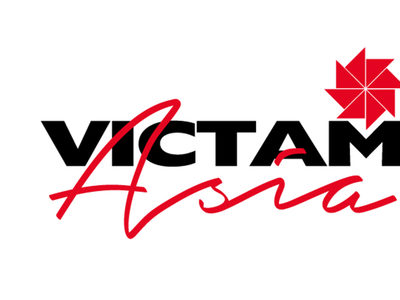Germany is the European Union’s biggest member state, in terms of population and the size of its economy. It’s a big grains producer and a big market. As an E.U. member, its farming is part of Europe’s Common Agricultural Policy and is affected by E.U. rules and E.U. market management. Although German companies are big players in technical terms, particularly in plant breeding and agrochemicals, German consumers tend to have an aversion to mixing technology and food, making Germany an opponent of biotech in agriculture and a big market for organic products.
The International Grains Council (IGC) puts Germany’s total grains production for 2014-15 at 52 million tonnes, compared with 47.5 million the year before. The IGC estimates wheat production in 2014-15 at 27.8 million tonnes, up from 24.9 million.
Germany’s maize production is put at 5.1 million tonnes, up from 4.2 million, while the country’s barley crop is put at 11.6 million tonnes, up from 10.4. The IGC puts Germany’s 2014-15 crop of rye at 3.8 million tonnes, down from 4.7 million the year before. It’s a figure which makes Germany the world’s biggest rye producer. Production of oats is put at 700,000 tonnes, up from 600,000.
Germany is Europe’s biggest producer of rapeseed, according to the IGC, with a 2014-15 crop of 6.3 million tonnes, up from 5.8 million, a figure beaten only by Canada and China.
Germany’s rapeseed area is expected to fall for 2015-16. One major factor is the effect of an E.U. ban on neonicotinoid seed treatments. An attaché report on the E.U.-wide crop situation also pointed out that the E.U.’s change of opinion on biofuels have triggered uncertainty among farmers about demand, while E.U. rule changes designed to encourage more diversity in farming have encouraged them to look at alternatives.
Germany’s statistics office puts total imports of wheat and wheat products at 4.083 million tonnes in 2013. Exports of wheat and wheat products were 9.116 million tonnes. The country exported 458,100 tonnes of rye and rye products while importing 492,800 tonnes.
Barley exports in 2013 were 2.843 million tonnes, with imports at 1.097 million, and Germany exported 858,500 tonnes of maize and imported 2.106 million tonnes.
According to the German milling industry association, Verband Deutscher Mühlen, Germany’s flour mills process some 8.4 million tonnes of cereals a year, including 7.2 million tonnes of wheat and 800,000 tonnes of rye, along with 415,000 tonnes of hard wheat. The mills produce around 5.5 million tonnes of wheat flour, 655,000 tonnes of rye flour and 300,000 tonnes of products from hard wheat.
The association points out that the industry is more concentrated in the southern states of Bavaria, Baden-Württemberg,Rhineland-Palatinate and the Saarland. It makes a comparison between the number of mills and the population. In the south (Bavaria, Baden-Württemberg), each mill supplies flour to some 173,637 residents. In the north (Lower Saxony, Bremen, Schleswig-Holstein, Hamburg), each mill supplies 551,155 residents. On a countrywide basis, the average German mill supplies flour and milling products to around 325,000 residents. The average mill produces around 36,846 tonnes of flour a year.
The industry’s structure has changed over the years. In 1950 there were almost 19,000 mills in Germany, a figure which dropped to 2,500 by 1980. Now there are 550. Of these, 218 mill more than 1,000 tonnes a year, making them big enough to be included in official statistics. The association explains that there are many mills in Germany with successful businesses supplying a range of bakers with a varied selection of milling products, or supplying those products direct to consumers through a mill shop.
ANTI-GM stance
Reports from USDA attachés, both covering the E.U. as a whole and Germany on its own, describe a situation of increasing opposition to biotech products.
“There used to be many field trials in France and in Germany, but their number has fallen to zero in 2014 due to repeated destruction of test plots by activists during the past few years,” a report on the E.U.-wide situation said.
It described the increasing difficulties E.U. importers were having sourcing non-GM products.
“At the beginning of 2014, the German poultry farmers association withdrew its 14-year commitment to use only non-GE soybeans in poultry feed, stating that it was impossible to meet in the current market conditions,” it said. “In response, German food retailers demanded that the farmers stop using GE feed for poultry at the beginning of 2015. The debate has become an important aspect in the discussion of the future of German poultry and livestock production.”
It described Germany’s approach to biotechnology as “conflicted.”
“In the ‘Conflicted’ MS (member states), the scientific community, farmers, and the feed industry are willing to adopt the technology, but consumers and governments, influenced by activist Green parties and NGOs, reject it,” it said. “In this group, France, Germany, and Poland cultivated Bt corn in the past, but have since implemented national bans. Within this group, Germany has become increasingly vocal against agricultural biotechnology.”
A separate report focusing on Germany gave more description of public attitudes. “Public rejection of genetically engineered (GE) crops is widespread,” it said. “Polling shows German public opposition to GE foods has run steadily in the 80% range and that there is a high degree of familiarity with the issue.
“For nearly a generation, German environmental and consumer activists have protested against the use of biotechnology in agriculture, both in Germany and globally. Biotech test plots – which are used both as a research tool and are a required part of the E.U. regulatory approval process – are routinely destroyed by vandals, to the point where test plots are no longer attempted in Germany today.”
There is also religious opposition. “Germany’s influential Catholic and Protestant churches have also taken strong anti-biotech positions and biotech crops are generally not allowed on church-owned lands (churches have significant agricultural holdings in Germany),” the attaché said.
“The federal government has banned the planting of an E.U.-approved GE corn,” it said. “Many local governments and organizations within Germany have instituted biotech-free zones.”
The attaché made clear the apparent contradiction between the involvement of German companies in biotech and the official German attitude to the technology. “German seed companies such as Bayer Crop Science, BASF, and KWS develop GE plants or crops,” the report said. “However, their production sites are outside of Europe.”
The firms have responded to Germany’s attitude to biotech. “In January 2012, BASF announced that it is moving its agricultural biotech operations from Germany to the United States, citing poor and deteriorating attitudes toward GE crops and poor marketing prospects in Europe,” the attaché said. “Germany nonetheless remains a major consumer of GE products since it imports more than 6 million tonnes of soybeans and soy meal for animal feed.”
Major organic market
The attaché has also reported on Germany’s big organic sector.
“After the U.S., the German organic food market is the second biggest market of the world,” the report said. “Sales of organic food in Germany have steeply increased over the last couple of years and peaked in 2013 with organic food sales reaching over €7.5 billion. That’s nearly a third of the total organic food sales in the European Union and just about 4% of the total food sales in Germany.”
It explained that while organic sales have more then tripled since 2000, domestic production has not kept pace, increasing demand for imports.
Biofuel leader
Germany has been a major driver in the expansion of biofuel production and use in Europe.
“In 2015, bioethanol use is forecast to recover to the 2011 level solely because of an increased use in Germany,” an attaché report on the biofuels sector across Europe said. “In Germany, consumption is expected to increase as a result of the switch in biofuels mandates from being based on energy content to greenhouse gas (GHG) savings. Based on the GHG savings, this new scheme is anticipated to create a preference for ethanol above biodiesel.”
Key Facts
Capital: Berlin
Population: 80,996,685 (July 2014 est.)
Religions: Protestant 34%, Roman Catholic 34%, Muslim 3.7%, unaffiliated or other 28.3%.
Location: Eastern Asia, bordering the East China Sea, Korea Bay, Yellow Sea, and South China Sea, between North Korea and Vietnam.
Government: Federal republic. Chief of state: President Joachim Gauck (since March 23, 2012). Head of government: Chancellor Angela Merkel (since Nov. 22, 2005).
Economy: The German economy – the fifth largest economy in the world in PPP terms and Europe’s largest – is a leading exporter of machinery, vehicles, chemicals, and household equipment and benefits from a highly skilled labor force. Like its Western European neighbors, Germany faces significant demographic challenges to sustained long-term growth. Low fertility rates and declining net immigration are increasing pressure on the country’s social welfare system and necessitate structural reforms. Reforms launched by the government of Chancellor Gerhard Schroeder (1998-2005), deemed necessary to address chronically high unemployment and low average growth, contributed to strong growth and falling unemployment. These advances, as well as a government subsidized, reduced working hour scheme, help explain the relatively modest increase in unemployment during the 2008-09 recession – the deepest since World War II – and its decrease to 5.3% in 2014. The new German government introduced a minimum wage of about $11.60 (8.50 euros) per hour to take effect in 2015. Stimulus and stabilization efforts initiated in 2008 and 2009 and tax cuts introduced in Chancellor Angela Merkel’s second term increased Germany’s total budget deficit – including federal, state, and municipal – to 4.1% in 2010, but slower spending and higher tax revenues reduced the deficit to 0.8% in 2011, and in 2012 Germany reached a budget surplus of 0.1%. The budget was essentially in balance in 2014. A constitutional amendment approved in 2009 limits the federal government to structural deficits of no more than 0.35% of GDP per annum as of 2016, though the target was already reached in 2012. Following the March 2011 Fukushima nuclear disaster, Merkel announced that eight of the country’s 17 nuclear reactors would be shut down immediately and the remaining plants would close by 2022.
GDP per capita: $44,700 (2014 est.); inflation: 0.9% (2014 est.); unemployment: 4.5% (2014 est).
Currency: Euro: 0.93 euros (EUR) equal 1 U.S. dollar (April 20, 2015).
Exports: $1.547 trillion (2014 est.): motor vehicles, machinery, chemicals, computer and electronic products, electrical equipment, pharmaceuticals, metals, transport equipment, foodstuffs, textiles, rubber and plastic products.
Imports: $1.319 trillion (2014 est.): machinery, data processing equipment, vehicles, chemicals, oil and gas, metals, electric equipment, pharmaceuticals, foodstuffs, agricultural products.
Major crops/agricultural products: Potatoes, wheat, barley, sugar beets, fruit, cabbages; milk products; cattle, pigs, poultry.
Agriculture: 0.9% of GDP and 1.6% of the labor force.
Internet: Code: .de; 20.043 million (2012) hosts and 65.125 million (2009) users.
Source: CIA World Factbook





